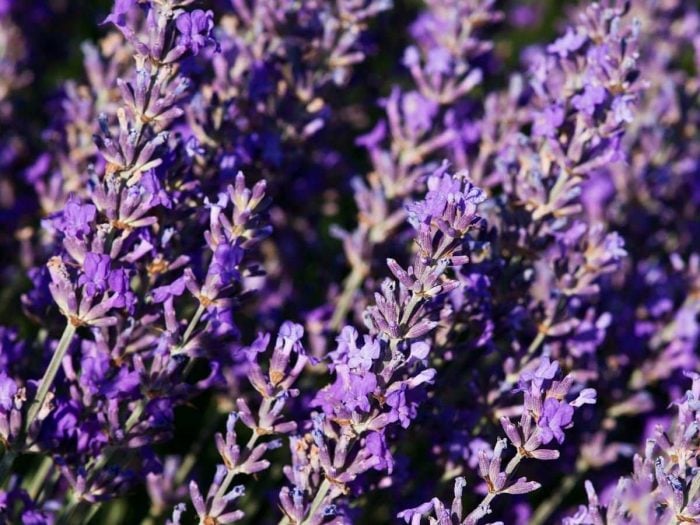
Pests and diseases of seed tubers compromise yam production.
Numerous pests and diseases affect yam tubers. Nematodes, a particular concern, manifest during storage and facilitate tuber rot by fungi and bacteria. Viruses, on the other hand, can be devastating in the field during the growing period. Most bio-constraints affect seed productivity and viability, reducing germination, plant vigor and yield. The use of good quality and healthy seed material is therefore a crucial foundation for high and sustainable yam production, as it is for other clonally propagated crops, such as potato.
The use of diseased seed tubers results in the production of small, poor quality ware yam and a persistent cyclical decline. To prevent the introduction of pests and diseases into the production cycle, it is essential that healthy planting material is supplied to producers. However, obtaining healthy seed yam is one of the biggest problems for growers. Some farmers use their own seed stock, harvested from the previous season, while others obtain the seed material from specialized seed yam producers.
Producing Healthy Seed Yam
As with potato, yam seed material should be generated following strict production and phytosanitary guidelines to ensure high quality and disease-free seed stock. Dedicated seed producers are best suited for the supply of seed material. Farmers who prefer to generate seeds for their own use should set aside areas specifically for seed production. Seed yam should be produced by planting setts cut from a larger tuber which will provide whole seed yam of a suitable size as planting material; a relatively high level of care has to be applied because cut surfaces increase the likelihood of tuber rot and desiccation.
Minisetts (cutting yam tuber into smaller pieces) of 25 g have proved successful. However, farmers in West Africa prefer larger sized setts. These are less likely to fail and require less attention, especially under more marginal or risky conditions. An optimum size for the setts with which farmers felt comfortable and which produced favorably sized seed was 75-100 g spaced 25 cm on rows and with up to 1 m between rows. Rows spaced closer together can be used, but may require nutrient and irrigation supply.
Uncut whole seed tubers are best suited for the production of ware yam, rather than cut pieces from a larger tuber. Whole seed material reduces seed loss, particularly under marginal or stressed conditions. The supply of healthy, suitably sized whole seed tubers for use as planting material should therefore be a priority aim.
To generate healthy stocks, it is important to use the best possible quality yam for planting. The seed stock then acts as the superior quality material for the successive generation of seeds. This ‘rolling stock’ should then be regularly examined and treated as necessary to maintain high quality. A strict system for the identification, removal, and destruction of plants infected with viruses in the field needs to be rigorously employed.
For healthy seed stocks, three treatments can be employed to produce (or maintain) planting material free of pests and with very low presence of pathogens.
Hot Water Treatment
Exposure to a temperature of 50-55°C for 20-25 minutes disinfests tubers of most pests and pathogens. A large container that can be heated, into which yam tubers are submerged, preferably with a thermostat that will help maintain the water at a constant temperature, is required. The container can be constructed locally.
Disadvantages: There is the need for specialized equipment and a fuel/energy source; the process is time-consuming and slow; it may reduce germination of treated material, particularly certain sensitive cultivars.
Chemical Seed Sett Treatment
The use of a recommended fungicide-insecticide combination before planting has provided excellent results for producing healthy seeds. This is ideally applied by dipping setts into a liquid suspension, then leaving them to dry before planting. Studies in West Africa showed that a combination of a compatible fungicide and insecticide was most effective in increasing the yield, quality, and storability of seeds (Kenyon, 2005). It is important to receive local information from agro-input suppliers on safe and suitable products for this use. Chemical dusts can also be used, but may result in an uneven distribution.
Disadvantages: Care is required to prevent unwanted human and environmental contamination and to ensure the safe disposal of excess chemicals and packages; this method is not suitable for organic crop production.
The dual combination of hot water treatment followed by chemical dip is also a viable strategy, particularly when dealing with poor quality initial material.
Tissue Culture and Vine Cuttings
Tissue culture and vine cuttings are other technologies to mass-produce plants that form healthy mini-tubers to be used as seed material. They allow the elimination of major pests such as nematodes if they are planted on nematode-free land. However, as for hot water and chemical treatment, viruses cannot be fully eliminated and plants must be monitored for these symptoms and affected plants eradicated.
Vine cuttings give a high multiplication rate without the use of tubers. Depending on the cultivar, size, and type of mother plants, the multiplication rate of vines (about 20-50 times or more) and the size of tubers harvested will both vary. The combination of tissue culture and vine cuttings gives even higher multiplication rates, rapid growth, and clean tubers for seeds. However, there is a need for the validation of the technology with more species and cultivars in different agro-ecological zones. Nevertheless, it is expected that this technology can be simplified so that NARIs and seed producing farmers can apply it and produce healthy seed tubers.
Disadvantages: Tissue culture facilities are needed and the availability of rice husks for making carbonized rice husks as the rooting media is limited in some areas where rice is not cultivated.
source: www.practicalaction.org, bakerri.blogspot.com




 Bioorganic Fertilizer (BOF) is a processed inoculated compost from any organic material that has undergone rapid decomposition by the introduction of homogeneous microbial inoculants. This is different from fresh organic fertilizer where natural decay process is brought about by the action of heterogeneous microbes present in the organic matter. Compared with the traditional composting method, microbial inoculation hastens the decomposition from three months to just 3-4 weeks.
Bioorganic Fertilizer (BOF) is a processed inoculated compost from any organic material that has undergone rapid decomposition by the introduction of homogeneous microbial inoculants. This is different from fresh organic fertilizer where natural decay process is brought about by the action of heterogeneous microbes present in the organic matter. Compared with the traditional composting method, microbial inoculation hastens the decomposition from three months to just 3-4 weeks.




